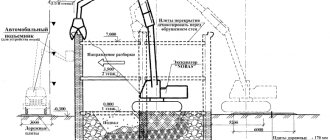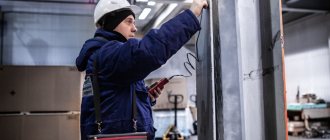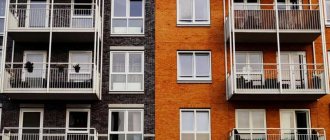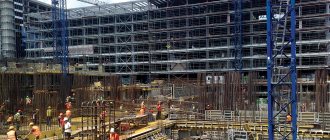18.03.2020
Functional fire hazard class is a technical characteristic or parameter that classifies buildings and structures according to their functional purpose, production process mode, operating features, etc. The class is assigned at the construction stage and is necessarily included in the design documentation in order to protect the facility from fires and determine a fire safety plan.
Legislative standards establish 5 classes of functional fire hazard (F1-F5). The highest safety requirements are in the F1 category, the level decreases with each class.
Factors influencing class determination:
- method of building operation;
- the degree of safety of people in case of fire (age, health status, ability to sleep are taken into account);
- the number and functionality of people in the building.
Functional fire hazard classes
Class F1. Premises for permanent residence and temporary (including 24-hour) stay of people
Such buildings are used around the clock, and the contingent of residents varies in age and physical health. A distinctive feature is that the room is equipped with places for sleeping, that is, a person can be here at any time of the day, and not necessarily while awake.
Class F1 is considered the most dangerous and requires maximum fire protection, since the source of fire cannot always be detected immediately, and the fire will have enough time to spread.
Subclasses:
- F1.1. “Children's preschool institutions, specialized homes for the elderly and disabled (not residential), hospitals, dormitories of boarding schools and child care institutions.” Characterized by increased complexity due to problematic evacuation in the event of a fire. The number of personnel trained in fire safety rules and capable of evacuating is less than the number of children, sick, elderly or disabled people. Also, individual premises may be classified as those in which large numbers of people are likely to be present (assembly hall, dining room, games room).
- F1.2. “Hotels, hostels, dormitories of sanatoriums and general holiday homes, campsites, motels and boarding houses.” Those inside are well versed in the area, familiar with fire safety rules, and are capable of calm evacuation in the event of a fire. A caveat is that trained personnel who know the location of fire exits and fire extinguishing equipment are significantly outnumbered by guests.
- F1.3. "Multi-apartment residential buildings." People living in such premises have different ages and health conditions. The maximum number occurs in the evening and night time. During the daytime, unaccompanied children may be present in the premises.
- F1.4. “Single-family, including blocked residential buildings.” In such buildings there is no staircase, special escape routes are not required, since each room has access to the street through a window. It is distinguished by a small number of residents, among whom there may be children.
Class F2. Entertainment, cultural and educational institutions
Such buildings are characterized by the following:
- mass presence of a healthy population of various ages at certain hours;
- the number of visitors significantly exceeds the number of service personnel;
- Most guests are not familiar with the location of fire exits and the placement of fire-fighting equipment.
Subclasses:
- F2.1. “Theaters, cinemas, concert halls, clubs, circuses, sports facilities with stands, libraries and other institutions with an estimated number of seats for visitors in enclosed spaces.” Due to the large number of seats per area, evacuation may be difficult. Current regulations prescribe the mandatory attachment of chairs to the floor surface in such premises.
- F2.2. "Museums, exhibitions, dance halls and other similar indoor establishments." The number of seats is not as large as in places of subclass F2.1., which slightly facilitates evacuation in case of fire.
- F2.3. “Institutions specified in F2.1, located outdoors.” Evacuation occurs quickly and without harm to human health.
- F2.4. “Institutions specified in F2.2, located outdoors.” The risk of injury to people present in such a place at the time of fire is minimal.
FZ class. Public service enterprises
In such establishments there are both clients and staff. The former do not have information about emergency exits, the latter are required to know. Visitors of different ages, mostly physically healthy. In terms of quantity, there are more clients than employees.
Subclasses:
- F3.1. "Trade enterprises". They assume the accumulation of a large number of people and can work around the clock. A dangerous factor for untimely detection of a fire is the presence of utility rooms where personnel are not always present.
- F3.2. "Catering establishments." Open around the clock or according to schedule (cafes, bars, restaurants, canteens). They can be located in residential buildings or detached multi-story buildings. Among the dangerous factors: mass gatherings of people, the presence of hot workshops with open fire (kitchen), utility rooms without constant human supervision. Furniture in such rooms, as a rule, is not screwed to the floor and can be moved around the room, sometimes at odds with the safe layout.
- F3.3. "Stations". All types include: bus, railway, river, airports and seaports. They work around the clock, sometimes there is a population in a sleeping state: from infants to the elderly, healthy or in wheelchairs. The feature is the massive presence of people.
- F3.4. "Polyclinics and outpatient clinics." They work during the daytime. Evacuation plans involve leaving the building through corridors and stairwells. The number of visitors exceeds the number of staff.
- F3.5. “Premises for visitors to consumer and public service enterprises.” These include notary offices, post offices, hairdressers, dry cleaners, shoe repair shops, studios, etc. They operate during the day and are equipped with highly flammable interior elements. There may be crowds of people in common rooms (operating rooms).
- F3.6. “Physical training complexes and sports training institutions without stands for spectators, household premises, baths.” In such buildings there is a main room in the form of a swimming pool, a gym and many ancillary rooms (locker rooms, showers, toilets, etc.). The number of clients is much higher than the number of staff. The fire hazard is due to the presence of furniture and some interior decoration, usually quite small. A possible source of fire could be a bathhouse or sauna room (high temperatures, wood trim).
Class F4. Educational institutions, scientific and design organizations, management institutions
The premises are used during the daytime during certain hours. The same people are present, which means they have information about fire safety rules and possible escape routes in the event of a fire. Only in some institutions there can be children, but in the majority there are adults with legal capacity.
There is a certain number of seats, utility rooms, workshops, and laboratories. Corridor-type layouts with at least two staircases.
Subclasses:
- F 4.1. “Schools, non-school educational institutions, secondary specialized educational institutions, vocational schools.” In addition to the staff, there are children of different ages, everyone is well familiar with the evacuation plan. Classrooms are located only on one side of the corridor, with windows on the other, which makes it easier to remove smoke from the building if necessary. The dining room, assembly hall and sports hall are premises with a potential large number of people.
- F 4.2. “Higher educational institutions, institutions of advanced training.” There are adults inside who visit the building every day. Well aware of fire safety rules and evacuation routes.
- F 4.3. “Institutions of governing bodies, design and engineering organizations, information and editorial and publishing organizations, research organizations, banks, offices, offices.” The corridor system of the building with offices on both sides, those inside are aware of the escape routes. Usually there are many small offices, few visitors.
- F 4.4. "Fire stations." The people here are adults and are very familiar with the layout of the premises.
Class F5. Industrial and warehouse buildings, structures and premises
There are not many workers, there are no large crowds of people. Work takes place around the clock, in shifts. The same adults with normal physical condition are present.
Subclasses:
- F 5.1. “Industrial buildings and structures, production and laboratory premises, workshops.” One building can accommodate rooms with different fire and explosion hazards (from A to D). When carrying out any manipulations, adults are always present, which guarantees instant detection of the source of fire.
- F 5.2. “Warehouse buildings and structures, parking lots for cars without maintenance and repair, book depositories, archives, warehouses.” People are not always present in technological rooms, which makes it difficult to detect fire in a timely manner. Smoke removal can be complicated by the building's lack of windows or underground location.
- F 5.3. "Agricultural buildings". Different premises have different purposes - from storage facilities to farms, product processing facilities. There are no visitors, the staff is small. They are located far from other structures, which eliminates the possibility of fire spreading quickly.
Problems of changing the purpose of accounting objects
In accordance with paragraphs 15,16,18 of part 2 of article 7 of the Federal Law “On the State Real Estate Cadastre” dated July 24, 2007. No. 221-FZ (hereinafter referred to as the Cadastre Law) the following are entered into the state real estate cadastre:
- purpose of the building (non-residential building, residential building or apartment building), if the property is a building;
— purpose of the structure, if the property is a structure.
According to the Procedure for maintaining the state real estate cadastre, approved by order of the Ministry of Economic Development of the Russian Federation dated 02/04/2010 No. 42 “On approval of the Procedure for maintaining the state real estate cadastre” (hereinafter referred to as the Procedure for maintaining the State Real Estate Cadastre), clause 8, subparagraph 1 of section II Structure and composition of cadastral information of the Register of Real Estate General information about the property is entered into the record about the property in the amount provided for in paragraphs 63, , , and of the Procedure for Maintaining the State Property Committee.
In accordance with Part 2 of Article 16, cadastral registration in connection with a change in the unique characteristics of a real estate property or any specified in paragraphs 7, 13 - 20, 25 - 29 of Part 2 of Article 7 of the Law on Cadastre Information is carried out, unless otherwise provided by the Law on Cadastre, on the basis of an application for cadastral registration and the documents submitted by the applicant or submitted in the manner of interdepartmental information interaction necessary in accordance with the Cadastre Law to carry out such registration.
As follows from paragraph 10 of part 1 of Article 22 of the Cadastre Law, the document required to enter or change information about the purpose is a copy of the document confirming, in accordance with the Cadastre Law, a change in the purpose of the building or premises. Such documents may be requested by the cadastral registration authority in the manner established by Part 5 of Article 16 of the Cadastre Law, i.e. in the order of information interaction.
Accordingly, if the cadastral registration body receives an application for cadastral registration in connection with a change in the purpose of a building, premises and at the same time the relevant documents are not received from the authorized state authority or local government body in the order of information interaction, the cadastral registration body independently requests such documents, if such documents were not submitted by the applicant on his own initiative.
When processing applications received by the cadastral registration authority in connection with a change in the purpose of a building or premises, the following problems arise:
1) Lack of information about the cadastral number of the registration object in the acts of local self-government bodies (hereinafter referred to as LGUs) (not often, but there are cases).
Whereas, in accordance with paragraph 9 of the Decree of the Government of the Russian Federation dated 02/03/2014 N 71 “On approval of the Rules for sending by state authorities and local governments of documents necessary for entering information into the state real estate cadastre, to the federal executive body authorized in the region state registration of rights to real estate and transactions with it, cadastral registration and maintenance of the state real estate cadastre, as well as the requirements for the format of such documents in electronic form" in the case of transfer of residential premises to non-residential premises, non-residential premises to residential premises, the local government body sends to cadastral registration authority a document reproducing the information contained in the decision to transfer residential premises into non-residential premises, non-residential premises into residential premises, including the cadastral number and purpose of the premises in respect of which the transfer is being carried out, or a document reproducing the information contained in the acceptance commission act, confirming the completion of reconstruction and (or) redevelopment and (or) other work (if such transfer required reconstruction, redevelopment or other work in relation to the premises).
2) When transferring from residential to non-residential premises (or vice versa), the order/resolution of the compulsory medical insurance indicates the area of the residential premises without taking into account the balcony, loggias, or vice versa, when transferring to residential from non-residential premises, the area is indicated taking into account cold rooms (loggias, balconies).
However, in accordance with Order No. 531 of the Ministry of Economic Development of the Russian Federation dated September 30, 2011 “On approval of the Requirements for determining the area of a building, premises” (hereinafter referred to as Order No. 531), the total area of a residential premises, residential building consists of the sum of the area of all parts of such premises, residential houses, including the area of auxiliary premises intended to satisfy citizens' household and other needs related to their residence in residential premises, with the exception of balconies, loggias, verandas and terraces.
Thus, specialists authorized to carry out cadastral registration of real estate objects have to independently determine the area of the premises in accordance with Order No. 531.
3) In regulations, instead of purpose, they write the intended purpose, functional use, etc.
4) The object of registration in the state real estate cadastre is a building, but the decree indicates the premises and vice versa.
5) The state real estate cadastre contains information about a building with the designation “non-residential building” and the name “cafe”. The owner wants to change the name from “cafe” to “shop”. At the same time, the local government authority stipulates in the resolutions “... to change the purpose of the building for use for the purposes of a store...”. Whereas in this case, the purpose of the building does not change, but only the name changes.
6) Part 8 of Article 23 of the Housing Code of the Russian Federation “The procedure for transferring residential premises into non-residential premises and non-residential premises into residential premises” provides that if the use of premises as residential or non-residential premises requires its reconstruction, and (or) redevelopment, and (or) carrying out other work, then the decision to transfer the premises is the basis for carrying out the corresponding reconstruction work, and (or) redevelopment, taking into account the reconstruction and (or) redevelopment project.
The completion of the reconstruction, and (or) redevelopment, and (or) other work specified in Part 8 of Article 23 is confirmed by an act of the acceptance commission formed by the body carrying out the transfer of premises (hereinafter referred to as the act of the acceptance commission).
The acceptance committee’s act confirming the completion of the reconstruction and (or) redevelopment must be sent by the body carrying out the transfer of premises to the body carrying out state registration of real estate objects in accordance with the Cadastre Law. The acceptance committee's act confirms the completion of the transfer of the premises and is the basis for using the transferred premises as residential or non-residential premises.
However, local government authorities in this case often send to the cadastral registration authority only the decision to transfer the premises (for example, from non-residential to residential), whereas in accordance with the Housing Code of the Russian Federation they must send an Acceptance Commission Report.
In connection with the above, we inform you that the existing problems that arise when processing documents received from local governments entail a violation of the Cadastre Law. This fact, as a consequence, leads to the subsequent adoption of decisions on the suspension/refusal of cadastral registration in terms of changes in the purpose of the property (building, premises).
Fire hazard classes of building materials
Article 36 of Federal Law No. 123 provides a classification of building materials according to fire hazard characteristics.
Categories:
- K0 - do not pose a danger;
- K1 - have minimal fire hazard;
- K2 - moderate fire hazard;
- K3 is a real fire hazard.
Fire hazard properties of building materials:
- flammability;
- flammability;
- toxicity;
- smoke generating ability;
- toxicity;
- flame spread.
Basic Concepts
Capital construction is the process of constructing objects, which includes foundation work, installation of supporting structures, fences, and supply of communications. A key characteristic of capital construction is the carrying out of excavation work to construct a buried foundation that connects a plot of land and a permanent structure located on it.
The building and the land underneath it become a single piece of property, so it is impossible to sell the house without a plot.
There are 3 areas of capital construction:
- construction of new facilities - according to the developed design documentation from the foundation to the final work, the new facility will be registered only after commissioning; construction involves the allocation of a new plot for development;
- reconstruction - elimination of physical deterioration of buildings or its individual elements, the process may include partial or complete redevelopment, redevelopment, modernization of engineering and other systems;
- construction of extensions - expansion of the area of the main facility due to extensions on the adjacent territory, new premises are put on the balance sheet after commissioning in accordance with the project declaration.
During the process of capital construction, the object becomes a capital structure; before this, you need to join an SRO.
Difficulties in establishing class
Sometimes it is quite difficult to determine to which class a building should be classified, since under one roof there may be objects of different dangers.
To understand the process, we can consider the situation using the example of a gas station (gas station). The direct purpose of such an object is trade. Accordingly, it is logical to assign class F3. But there is also a certain supply of fuel, which can be supplied rather than sold. Accordingly, class F5 “Warehouses” should be assigned. The operator's booth also belongs to F5, as a structure with a production purpose. But at the same time, there is a store at a gas station where you can buy water, cookies, and pay for gasoline - F3 (trade item).
To avoid confusion, it is stated that the class must be assigned to the building as a whole, and not to individual premises located in it. As a basis, the main direction of activity carried out by the enterprise is taken.
How are disputes regarding the lease of real estate and land plots resolved?
If the owner provides a plot of land for long-term use, then the tenant can build on this territory, and most importantly, formalize (register) a certain property. After the object is legalized, the tenant can demand that the owner sell part of the leased land plot. According to the law, he has the right to do this. Naturally, the tenant wants to purchase more land, and the landlord wants to sell as little as possible.
This is precisely why an expert assessment of the property according to the above parameters is necessary, which is an official document for out-of-court and judicial proceedings.
An independent expert evaluates the property according to all parameters:
- how much land is required for the full functioning of the facility
- what utilities are involved?
- the feasibility of the size of a land plot for servicing a specific property is assessed, based on production, commercial and target indicators.
An independent expert assessment also determines all statutory indicators necessary for the normal operation of a particular property.
Calculation of functional fire hazard category
The calculation takes place in several stages by a specialist who has permission to do so:
- Complete information about the object is collected along with its plan.
- Measurements are made of walls and ceiling heights in rooms that pose an increased danger during ignition.
- The average temperature in the room and the flooring material are determined.
- It is determined whether there is special equipment for extinguishing fire in the room, whether there are ventilation ducts.
Such careful manipulations are needed in order to most accurately determine the fire hazard class of an object and develop an evacuation plan to protect people’s lives.
Permit for construction of OKS
Based on Art. 51 for the construction of an OKS, except for the cases specified in paragraph 17 of this article, it is necessary to obtain permission. It can be issued only if the rules of land use and construction are observed (except for those objects that are not subject to (or are not established by) the requirements specified in the town planning regulations).
On the territory of airfields, restrictions are established on the use of OKS, that is, any facility cannot be built there.
You do not need permission:
- for the construction or reconstruction of individual housing construction, residential buildings, garages, garden houses, auxiliary buildings on a land plot;
- overhaul and reconstruction of the OKS (if it does not lead to a change in its purpose);
- construction of boreholes, gas pipelines, according to state technical projects;
- in other cases specified in paragraph 17 of Art. 51 Civil Code of the Russian Federation.
Features of calculating the functional fire hazard class
The functional fire hazard class of a building is determined by many parameters. Main legislative acts: Federal Law of July 22, 2008 No. 123 and Federal Law of July 10, 2012 No. 117.
The degree of fire hazard is determined after identifying the predominant rooms in the building of the same explosive level. Experts determine the permissible total volume of flammable media permitted for placement.
- The class is identified using a method in which the maximum level of danger is likely to be determined. The possibility of breakdown of some equipment is also taken into account - all parts of the device are placed in the building for the entire period of shutdown and the level of leakage from the pipeline connected to the system is recorded.
- Then the spilled composition evaporates, and the free area of the research object is also taken into account.
- Afterwards the excess pressure is calculated. To determine the category, a formula is used. Some categories are determined based on a particular group of atoms of the flammable medium that is located in the building.
To identify the category of fire hazard at a residential property, calculations should not be carried out.
The assigned class of a building determines how many entrances and exits it can have, what kind of fire alarm it should have, as well as other details that affect the safe stay inside.
Class F5 - Industrial and warehouse buildings, structures and premises
Premises of this functional class are characterized by the presence of a permanent contingent of workers, including around the clock. The entire contingent in the building are adults. The number of contingents in relation to the size and volume of the building is small, premises with a large number of people present. All people are familiar with the layout.
The layout can be very different; a corridor system is rare.
The division of the functional fire hazard class of buildings F5 into subclasses is discussed below.
Functional fire hazard class of buildings F 5.1 - Industrial buildings and structures, production and laboratory premises, workshops. This subclass is characterized by the fact that during the technological process there are always people in the room, which makes it easier to detect the start of a fire. Premises in the same building can have very different explosion and fire hazard categories - from A to D.
Functional fire hazard class of buildings F 5.2 - Warehouse buildings and structures, parking lots for cars without maintenance and repair, book depositories, archives, warehouses. This subclass is characterized by the fact that there is no technological process in the main premises and there is no permanent presence of people, which does not allow detecting the occurrence of a fire in the initial stage.
A characteristic feature of these premises is the absence of windows in the external walls or even underground location, which complicates the removal of smoke and access for fire crews to extinguish the fire.
Functional fire hazard class of buildings F 5.3 - Agricultural buildings. Premises can have very different planning solutions and technological purposes (livestock and poultry farms, storage facilities, product processing and feed preparation premises).
The number of staff is usually relatively small and there are no visitors.
A peculiarity of agricultural buildings is that they are often located away from other buildings, which eliminates the possibility of a fire spreading to neighboring buildings.
Industrial and warehouse buildings and premises in terms of explosion and fire hazard, depending on the quantity and fire and explosion hazard properties of the substances and materials contained (circulating) in them, taking into account the characteristics of the technological processes of the production facilities located in them, are divided into categories according to NPB 105.
Production and warehouse premises, including laboratories and workshops in buildings of classes F1, F2, FZ and F4 , belong to class F5.
A ventilation design specialist must know the classes and subclasses of functional fire hazard , because they primarily determine the need for smoke ventilation in buildings for various purposes. In all regulatory documents, when specifying fire safety requirements, references are given not to the specific purpose of the room or building, but to the class or subclass to which it belongs. Reading documents without a clear understanding of the meaning of each designation (class or subclass) is simply impossible.
Depending on the functional fire hazard, the standards also limit the possibility of locating premises in the basement and ground floors, the maximum number of floors of buildings, the number and slopes of stairs, the width of corridors and many other parameters that affect the possibility of evacuating people from a building in the event of a fire.
Article sent by: pentagon
I like (40)
Articles on the topic
0 42
Explosive areas. Explosive gases. Classification of hazardous areas
Published: July 14, 2017
Information about the fire
Types of structural fire hazards
Structural software is determined by the number of building elements involved in maintaining the combustion source, and whether they create a fire hazard. This indicator follows from the category of software for main load-bearing structures and barrier parts, such as staircases, etc.
There are 4 categories:
- C0 – parts of the building are made of non-combustible material;
- C1 – building materials are highly flammable;
- C2 – residential buildings with a degree of fire resistance from 2 to 4;
- C3 – a large part of the structure (base), which is not required to meet fire safety criteria (except for walls, partitions, etc.).
Classification of capital construction projects by functionality
Linear objects are structures for which certain operating conditions must be observed. These include, for the most part, infrastructure facilities: highways, pipelines, roads, power lines, tunnels.
Before the start of construction of a linear facility, all technical documentation is studied directly on the territory, and specialized equipment is used for geological and construction surveys and land surveying. A permit to carry out construction work is issued only after completing a package of necessary documents and agreement with the authorities.
Production and industrial structures include capital buildings erected for operation in agriculture and water management, trade, industry, transport, in the field of sales and logistics, communications, and public catering. Their goal is material production. These also include linearly extended objects.
Non-production facilities are administrative buildings, healthcare institutions, cultural and educational facilities, housing and communal services, and social facilities. Their goal is to provide cultural and everyday services.
There is also a definition of structures of defensive significance - these include buildings and structures necessary to ensure the security of the country.
Requirements for objects of different categories in one building
Buildings classified as F2, F3 and F4 must be located within 1 fire compartment, including technical rooms. Such a structure must have at least 3 fire hydrants.
Speaking about cinemas in which the total number of seats exceeds 300, there is a requirement to allocate separate halls into compartments. they must be equipped with their own escape routes, and there must be at least two staircases.
Each object must contain:
- smoke protection system;
- automatic fire extinguishing system;
- alarm;
- individual and general means for salvation;
- warning systems above type 4;
- special water supply.
To separate objects with different functions on the same territory, partitions are installed between them to protect against fire.
Capital construction project - what is it?
The definition of the term is prescribed in the Town Planning Code of the Russian Federation. A capital construction project is any unfinished structure for the construction of which foundation work is being carried out. For example, from laying the foundation to putting it into operation, a new residential building is a capital construction project. After commissioning and registration, the object becomes a permanent structure.
In turn, a capital structure is a finished residential or non-residential building, or structure inseparably connected with the site on which it is located. Such a structure cannot be dismantled and moved to another site while maintaining its main characteristics.
For comparison, a non-permanent structure can be disassembled, transported, assembled at another location and used for its intended purpose. Such objects include kiosks, sheds, temporary shelters, container-type structures and other light temporary buildings.
Consequences of misclassification
When the class of functional software is installed correctly, there is almost a 100% guarantee that in the event of a fire, all measures taken will not lead to disastrous consequences.
In each building it is necessary to place relevant documents that also indicate a list of fire safety rules. They are mandatory and are determined according to the established parameters (class, software category).
If installed incorrectly, the possibility of a fire with unpleasant consequences is very high.
Why are public buildings called public buildings?
A feature of public buildings that distinguishes them functionally from residential buildings is the massive simultaneous presence of people in them. These are, for example, entertainment and sports buildings, educational, cultural and educational, shopping, etc.
Interesting materials:
When is the full moon? When does the waxing moon occur in November? When is furosemide prescribed? When is Riboxin prescribed? When is the Psalter for the Dead not read? When is personal income tax not paid? When should you not commemorate? When is it forbidden to get married according to the Orthodox calendar? When is it necessary to provide sick leave to the employer? When is it necessary to carry out an inventory?
Fire hazard class table
| Class (subclass) of functional fire hazard of a building | Capacity of halls, people | Material class, not more than specified | |
| for walls and ceilings | for floor coverings | ||
| F1.2, F2.3, F2.4, F3.1, F3.2, F3.6, F4.2, F4.3, F4.4, F5.1 | more than 800 | KM0 | KM2 |
| 300-800 | KM1 | KM2 | |
| 50-350 | KM2 | KM3 | |
| up to 50 | KM3 | KM4 | |
| F1.1, F2.1, F2.2, F3.3, F3.4, F3.5, F4.1 | more than 300 | KM0 | KM2 |
| 15-300 | KM1 | KM2 | |
| up to 15 | KM3 | KM4 | |
Improper use - liability
Using non-residential premises for other purposes is fraught with administrative liability , and therefore, both legally and in fact, one must adhere to all legal requirements and norms.
In addition, Art. 15 of the Housing Code of the Russian Federation contains a number of requirements that a residential premises must meet, and, therefore, if they are violated, living in it is prohibited, it is automatically recognized as non-residential.
There is currently no direct liability for living in a building that does not meet the requirements of the law. But there are penalties regarding non-compliance with SES standards : noise level, layout, occupied space, lighting, etc.
In monetary terms, ordinary citizens face a fine of 500-1000 rubles, officials and individual entrepreneurs will have to pay 1000-2000 rubles, and legal entities - 10,000-20,000 rubles. Entrepreneurs also face suspension of activities for up to 90 days, and legal entities. persons for a period of up to three months (Article 6.4 of the Code of Administrative Offenses of the Russian Federation).
The essence of imposing fines is not punishment as such, but the protection of the life and health of the citizens themselves, because staying in a facility that does not meet the requirements is not at all safe .








